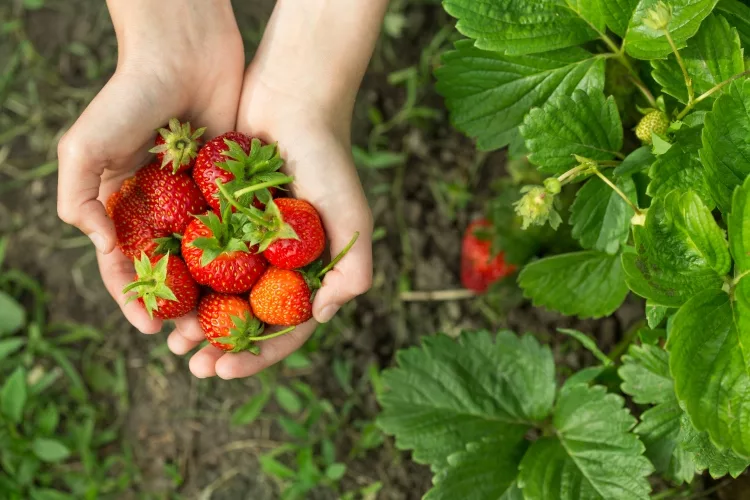reviewed by Christina Lopez
Runner plants are the plants that reproduce asexually. A large stem, the stolon, or a runner grows out of the mother plant horizontally and produces a baby plant at its tip. This plantlet will grow around the mother plant by eventually growing its roots, or it can be cut off and separated to get planted elsewhere.
Usually, the plant's vegetative growth is curbed when the seeds for reproductions consume all its energy. However, that doesn't seem to be the case in runner plants. The propagation method in these plants can help them spread throughout the area without requiring seeds for regeneration. An individual runner nodmay not survive unless it has grown its roots or is still attached to the mother plant. Once established, the new plant photosynthesizes for new growth and potential new runner generation.
The new plantlets spread around the mother plant, eventually covering all the area available around, hindering the surrounding plants' growth. If the runner plant produces crops, the regenerated plant will produce just like the parent plant, in high yield, during the season. The mother plant's expected yield may be reduced due to the plant concentrating on vegetative spreading rather than fruiting.
Creating all the new plantlets can take considerable energy away from the parent plant, and in some cases, the crops complete sternly for the natural nutrients present in the soil. This problem can be solved by separating the runner plant from the daughter plant. Once removed, both the parent and individual plantlets have a chance to grow larger fruits because they are not limited by a small growing space with low moisture and nutrients. Below are some examples of the runner plants.
Colourful Flowers that Grow in Shade
Also Read: 5 Plants That Contain Ephedrine

The delicious summer treat can be grown through seeds and stolons. Most varieties of strawberries grow out a runner, also known as stolons. These runners eventually develop their roots, resulting in a clone plant. Once these new roots establish in the soil, the runners begin to dry up and wither away. This propagation of the strawberry plant makes it easier to have a mass of them and an increased yield of fruits.
The plant blossoms in early spring, but the beautiful blossoms must be cut off and removed for better growth of the fruit, as the plant's strength must be retained for the later. The plant loves the sun, needs a little fertilizer and an ample amount of water to thrive. If provided with the above, the berries shall be ready for harvesting by early summers.
Bermudagrasses (Cynodon species), also known as wiregrass due to its weaving appearance. Primarily used for high-quality lawns, golf courses, and athletic fieldsbecause of its fine-texture. It is also used in areas where a vegetative cover is essential to prevent erosion. Sheathing the grounds with Bermudagrass requires adequate budgets and maintenance. They have a rapid-growth tendency and spread quickly, often leading to the thatch buildup and an uncontrollable spread, demanding mowing twice a week to prevent scalping. Bermudagrass is native to Africa, where it thrives on fertile soils, but the denseturf can be intolerant to shades and hence should not be grown underneath trees or a canopy.
Mint is one of the creeper herbs that produce runners. The stems extend arching at the soil to propagate (horizontally rather than vertically) over the surface to occupy, over time, all the space available to it. The peppermint herb can spread speedily, faster in the peak time that is spring and summer, and a little slower in the winters. The preferable conditions for a mint plant are full sun, well-drained but moist soil.
Liriope is a genus of low, grass-like, flowering plants, sometimes known as lilyturf, monkey grass, border-grass, and Aztec grass. Often planted as a ground cover or borders because of the arching grass-like narrow leaves. It can thrive indoors and outdoors and is usually potted as it perfectly fills in, giving an overflowing graceful look. It is a popular houseplant choice due to its appearance and easy maintenance.
The bugleweed is also known as the carpet bugleweed or Aguja ground cover because it can cover a large area with its rapid spread. It not only covers the grounds with ever-green foliage but also with colorful blooms during the seasons. The plants propagate with runners and can get out of control if not maintained.
50 Examples of Monocots & Dicots
Benefits of Adding Worms to Indoor Plants
 |
 |
 |
 |

About Christina Lopez
Christina Lopez grew up in the scenic city of Mountain View, California. For eighteen ascetic years, she refrained from eating meat until she discovered the exquisite delicacy of chicken thighs. Christina is a city finalist competitive pingpong player, an ocean diver, and an ex-pat in England and Japan. Currently, she is a computer science doctoral student. Christina writes late at night; most of her daytime is spent enchanting her magical herb garden.
 |
 |
 |
 |
Get new FREE Gifts. Or latest free growing e-books from our latest works.
Disable Ad block to reveal all the links. Once done, hit a button below
 |
 |
 |
 |